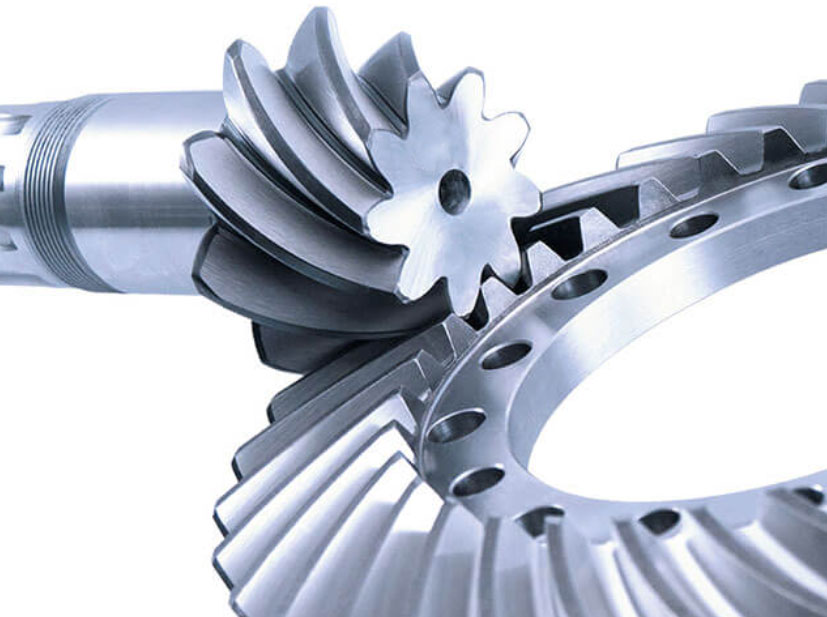
Spiral bevel gears play a crucial role in automotive differentials, which are an essential part of a vehicle’s drivetrain. Automotive differentials are responsible for distributing power between the wheels and allowing them to rotate at different speeds during cornering. Spiral bevel gears are used in the differential assembly to achieve this functionality effectively. Here’s how spiral bevel gears are utilized in automotive differentials:
1. Hypoid Design:
- Most modern automotive differentials use a hypoid design, which is a type of spiral bevel gear configuration.
- The hypoid gear design allows the axis of the pinion gear to be offset from the axis of the ring gear, resulting in smoother power transmission.
2. Torque Distribution:
- The differential’s primary function is to distribute torque from the engine to the two drive wheels.
- Spiral bevel gears in the differential assembly ensure the efficient transfer of power and torque to both wheels.
3. Torque Vectoring:
- In vehicles equipped with advanced differential systems, such as electronic limited-slip differentials (eLSD) or torque vectoring differentials, spiral bevel gears play a key role in implementing torque vectoring functionality.
- Torque vectoring optimizes power delivery to individual wheels, enhancing traction, stability, and handling during cornering.
4. Smooth Power Transfer:
- Spiral bevel gears provide smooth and efficient power transfer, reducing noise and vibration in the differential system.
- This contributes to a comfortable driving experience and extends the life of differential components.
5. Differential Locking:
- In some off-road or performance vehicles, differential locking systems are used to ensure power is evenly distributed to both wheels in challenging terrain or during aggressive driving maneuvers.
- Spiral bevel gears are integral components of these locking mechanisms, enabling seamless engagement and disengagement of the lock.
6. High Torque Capacity:
- Automotive differentials experience significant torque loads, especially in high-performance vehicles or those used for towing.
- Spiral bevel gears are designed to handle high torque capacities, ensuring reliable performance under demanding conditions.
7. Compact Design:
- The spiral bevel gear arrangement in differentials allows for a more compact design, maximizing space utilization within the vehicle’s drivetrain.
8. Gear Ratio Variation:
- Different spiral bevel gear ratios can be employed in the differential assembly to optimize vehicle performance, traction, and fuel efficiency.
- Custom gear ratios can cater to specific vehicle requirements and driving preferences.
9. Enhanced Traction and Handling:
- The proper functioning of spiral bevel gears in the differential helps improve traction and handling during various driving conditions, such as cornering or slippery surfaces.
10. Gear Materials and Heat Treatment:
- To withstand the demands of the differential, spiral bevel gears are often made from high-strength materials and undergo heat treatment to enhance their durability and wear resistance.
Spiral bevel gears in automotive differentials are instrumental in ensuring smooth power transmission, optimal torque distribution, and improved handling characteristics. As vehicles continue to evolve with advancements in automotive technology, spiral bevel gears remain a fundamental component in the drivetrain, contributing to the overall performance and efficiency of modern automobiles.
